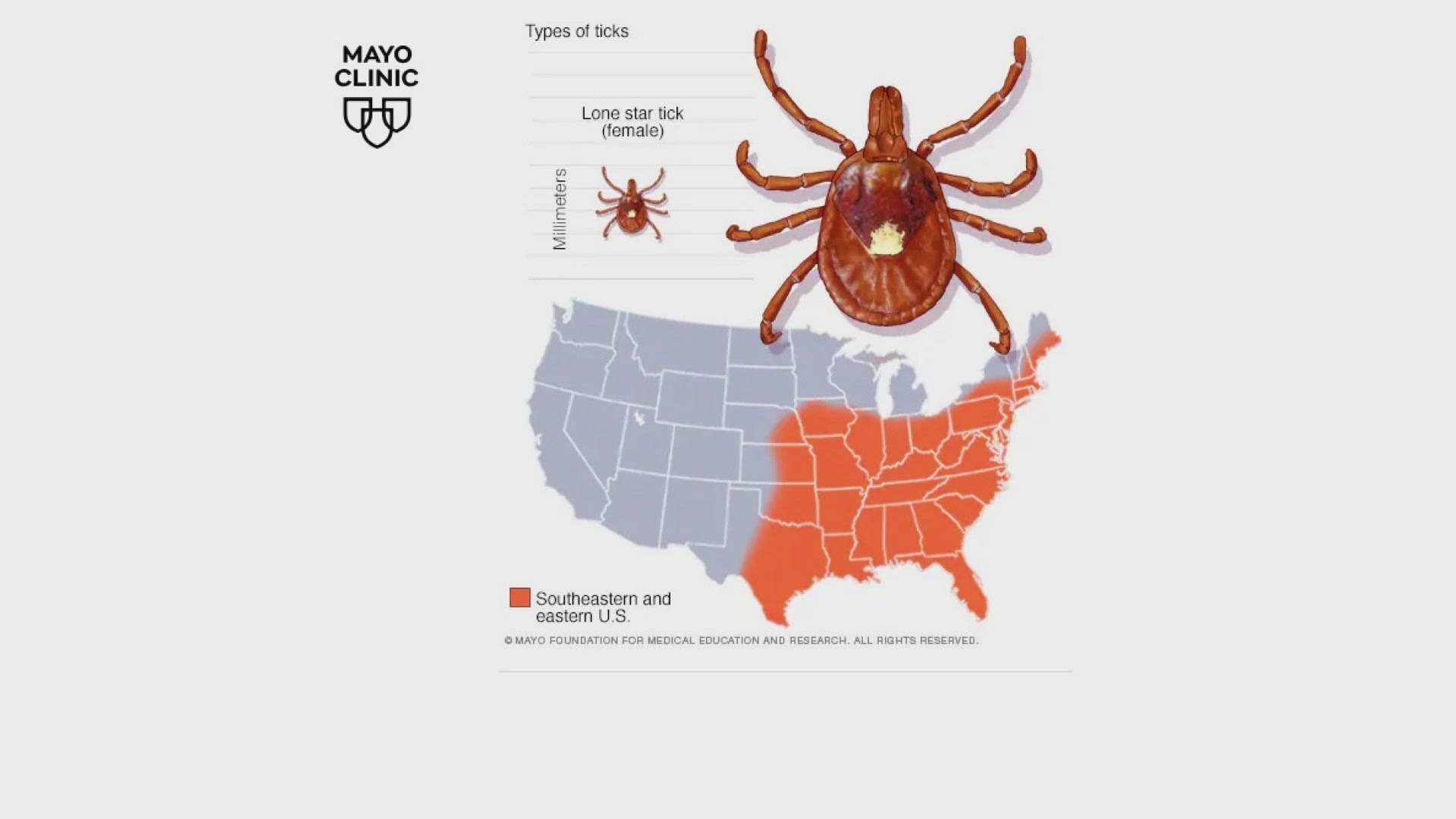GREENSBORO, N.C. — It sounds like something out of a science fiction novel: A disease that could make you allergic to meat? It’s real, out there, and more concerning, it’s being spread by an aggressive species of ticks.
The Lone Star Tick's most distinctive feature is its starlike white splotch, found on adult females. While other ticks spread germs that cause more widely known diseases, like Lyme, a bite from the species can cause a wide range of issues.
"With these ticks, you must worry about more than just meat allergies. They can also spread diseases like ehrlichiosis, which, if left untreated, can damage the brain or nervous system, and the Heartland virus, which can cause fever, fatigue, and joint pain," said Catherine Roberts, Consumer Reports.
Lone star ticks used to be found mostly in the Southeastern U.S., but that’s changing. With a warming climate and especially with the growth of local deer populations, many northern states and even parts of Canada are becoming more hospitable to these ticks.
As with other tick species, using an effective insect repellent is one key way of protecting against tick bites. The most effective repellents against mosquitoes and ticks contain 25% to 30% DEET as their active ingredient.
Based on Consumer Reports' latest exclusive tests, recommended repellents include Ben's Tick & Insect Repellent Wipes, Ben's Tick & Insect Repellent Wilderness Formula Pump, and 3M Ultrathon Insect Repellent8. All provide excellent protection.
After being outside, you should also thoroughly check yourself and others for ticks. Taking a shower is a good way to wash away any ticks that have yet to attach themselves. Another handy anti-tick measure is to wear clothing treated with the insecticide permethrin.

